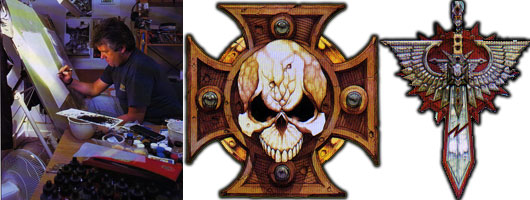
Most people know him mostly as the guy that designed the iconic badges for the various races in the Warhammer and Warhammer 40,000 universes. In fact it was hist first gig at the studio for which he thought he was being slighted. Art director [EDIT: think of John as the Games Workshop equivalent of Alan Moore. He looked over England's portfolio and said that he'd be good to draw badges. Wayne misheard him and thought he said that all he was good for was drawing badgers. Wayne is a very proud artist and felt put-off by the insult until he learned that. Wayne
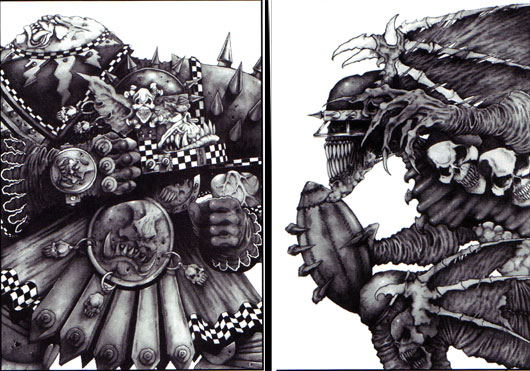
In that time Wayne painted some of the most amazing work that has ever been featured in White Dwarf and the various game books published by GW. Titles like Blood Bowl and Space Hulk would never have been as memorable without England's contribution. Featured here are mostly his black and white work, which by themselves stand head and shoulders above any other artist that has worked in two colors. Look at the amazing amount of detail for his characters, the illusions of texture and metal he is able to achieve with a solid pigment.
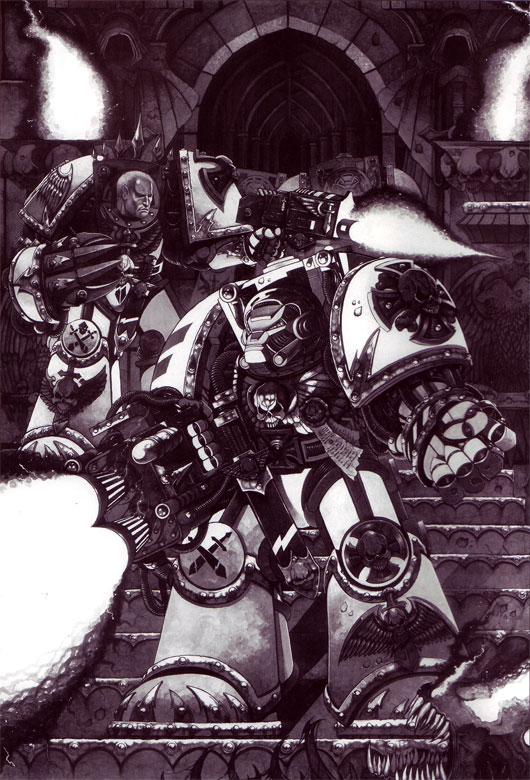
Wayne is a very outspoken artist that was the most influential in the bullpen. His techniques would be carefully studied by the younger artists working at GW. His advice was equally picked up by the new generation of artists entering GW in the late 80's. As Wayne was pushed by Blanche to work better and faster so too did he set up a friendly rivalry with all the other artists. The others at GW had their own styles and while some may have had better use of color or composition very few could keep up with Wayne when he was firing on all cylinders. When he wanted to he could inspire fear through his grimacing characters or embolden gamers with iconic heroes.
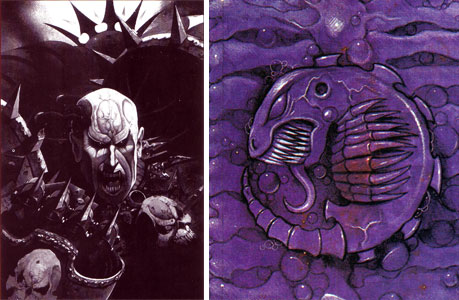
A few years into Wayne's tenure a new artist was finally allowed into the studio. Mark Gibbons had applied a few times at GW but had been turned down by Blanche time and again. Eventually his portfolio featured a very broad sample of styles and creativity that could no longer be ignored. Gibbons was taken under the wing of England and Blanche, then two titans of British fantasy art.
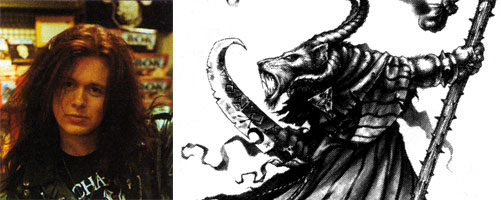
Mark became the heir-apparent to England, as his art was great and color but in black and white was simply amazing. His monochromatic work had its own appeal. His technique differed slightly from Wayne's, but the influence was there. Wayne used a sponge to create some of the amazing textured effects in his paintings, Gibbons never quite reached that level of detail but being taught new tools helped his technique.
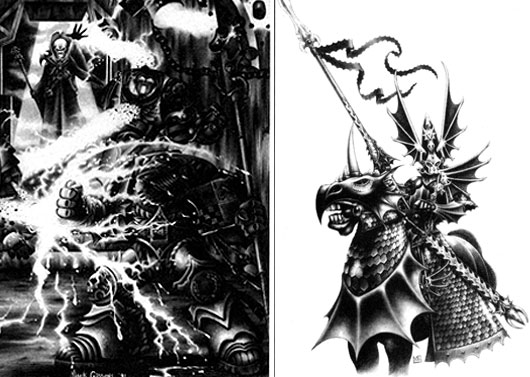
Gibbons would grow into his spot on the art team and fill in pieces for White Dwarf and the game books as well. During his tenure he worked on Space Hulk and Warhammer 40k pices mostly. His fantasy work should never be under-appreciated. He gave life to the Skaven, twisted rat-men from the old world of Warhammer, his foul chaos beasts looked grizzly and unkempt, his Dark Elves regal and murderous. His science fiction work of course found no equal. The bold black and white pieces by England and Gibbons would burn themselves into my memory and forever change the way I approach my art.
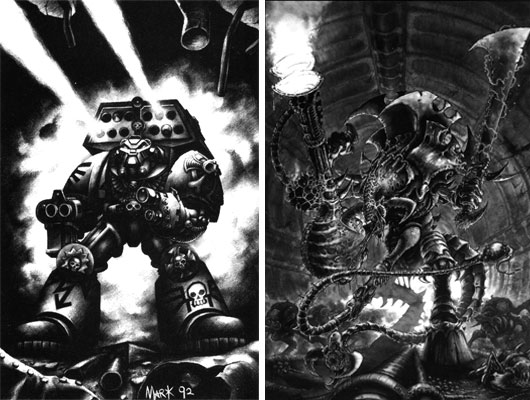
Gibbons' tenure at GW wouldn't last forever. After a decade Mark moved on and eventually became a freelance artist. Like England's freelance work for Wizards of the Coast now too can Gibbons' work can be appreciated by a broader audience. As always if you enjoyed this blog and would like to sponsor me please visit my Patreon page and consider donating each month, even as little as $1 would help make better blogs and even podcasts!

Yeah, I really like Wayne England's work, mostly from the M:tG side. I think that there is definitely some benefit in promoting artists, even when they leave to freelance, as it basically turns their freelance work into a chance at free advertising and makes your operation seem nice.
ReplyDeleteSeriously, I'm pissed that Yu-Gi-Oh doesn't credit any of their artists for their work, regardless of my issues with the game system itself. (Namely, it being way too easy to get card advantage via battle, and the worst errata policy I have ever seen,(mostly errata cards only when reprinted, even when they have developed new wording technology to make interactions clear and already having online databases), which may even been worse than no errata.
But I am blathering on about TCG rules, when that's only a tangent to Wayne England's work.
It is a shame that the companies that make the cards never assemble art books and credit the artists. The same goes for many things that people see and collect. Album covers, posters and skateboard decks have had some fantastic illustrations but you'd never know who did the art unless they were allowed to sign it. Of course this is not a problem with Yu-Go-Oh, it applies to other card systems made in Japan, China, the US and the UK. I wonder what would happen if all the great card artists went on strike.
Delete